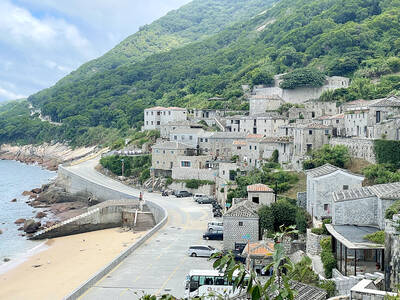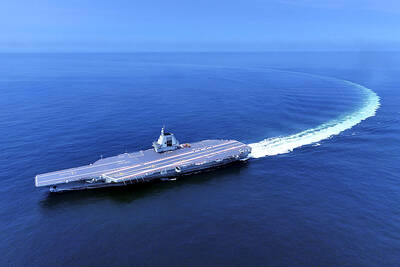The government has standard response policies in place regarding Chinese cognitive warfare tactics and would issue immediate clarification to mitigate any damage, Executive Yuan spokesperson Lo Ping-cheng (羅秉成) said.
Lo was responding this week after police opened an investigation into whether Chinese cognitive warfare was behind a Facebook post by media personality Antony Kuo (郭彥均), who cited a doctor as saying that a lot of children in Taiwan are dying of COVID-19.
Taiwan’s strategy to counter Chinese cognitive warfare tactics is to deny access, issue immediate clarifications about false reports and provide accurate information, while stepping up training of government employees to recognize fake news and prevent its spread, Lo said.

Photo: Lee Hsin-fang, Taipei Times
A lot of false information originating in China uses traditional Chinese characters and typical Taiwanese expressions, making it much more difficult to spot and counteract initially, he said.
The key to a rapid government response is the development of tools to identify fake news online, as well as whether the accounts posting the false reports are dummy accounts, he said.
Lo said fake news is not the only form that Chinese cognitive warfare assumes, as it sometimes uses real information phrased in such a way as to cause division and incite conflict within the country.
Another type of cognitive warfare is doctoring news or images from two or three years ago and distributing them, Lo said.
The main sources of cognitive warfare and false information are Beijing’s propaganda, its supporters on the Internet, content farms and local enablers, Lo said.
Most state propaganda is released by government agencies, while patriotic Chinese often spread fake information fed to them by the state, Lo said.
Fake news generated by content farms can have sources outside of China, Lo said, adding that these sites are usually influenced by Beijing.
Local enablers — people living in Taiwan who supporting Beijing’s views — also help spread fake news, often without a direct link to Chinese officials, though some do trade commercially with China, Lo said.

The first two F-16V Bock 70 jets purchased from the US are expected to arrive in Taiwan around Double Ten National Day, which is on Oct. 10, a military source said yesterday. Of the 66 F-16V Block 70 jets purchased from the US, the first completed production in March, the source said, adding that since then three jets have been produced per month. Although there were reports of engine defects, the issue has been resolved, they said. After the jets arrive in Taiwan, they must first pass testing by the air force before they would officially become Taiwan’s property, they said. The air force

GLOBAL: Although Matsu has limited capacity for large numbers of domestic tourists, it would be a great high-end destination for international travelers, an official said Lienchiang County’s (Matsu) unique landscape and Cold War history give it great potential to be marketed as a destination for international travelers, Tourism Administration Director General Chen Yu-hsiu (陳玉秀) said at the weekend. Tourism officials traveled to the outlying island for the Matsu Biennial, an art festival that started on Friday to celebrate Matsu’s culture, history and landscape. Travelers to Matsu, which lies about 190km northwest of Taipei, must fly or take the state-run New Taima passenger ship. However, flights are often canceled during fog season from April to June. Chen spoke about her vision to promote Matsu as a tourist attraction in

The Chinese People’s Liberation Army Navy’s (PLAN) third aircraft carrier, the Fujian, would pose a steep challenge to Taiwan’s ability to defend itself against a full-scale invasion, a defense expert said yesterday. Institute of National Defense and Security Research analyst Chieh Chung (揭仲) made the comment hours after the PLAN confirmed the carrier recently passed through the Taiwan Strait to conduct “scientific research tests and training missions” in the South China Sea. China has two carriers in operation — the Liaoning and the Shandong — with the Fujian undergoing sea trials. Although the PLAN needs time to train the Fujian’s air wing and

PAWSITIVE IMPACT: A shop owner said that while he adopted cats to take care of rodents, they have also attracted younger visitors who also buy his dried goods In Taipei’s Dadaocheng (大稻埕), cats lounging in shops along Dihua Street do more than nap amid the scent of dried seafood. Many have become beloved fixtures who double as photography models, attracting visitors and helping boost sales in one of the capital’s most historic quarters. A recent photo contest featuring more than a dozen shop cats drew more than 2,200 submissions, turning everyday cat-spotting into a friendly competition that attracted amateur and professional photographers. “It’s rare to see cats standing, so when it suddenly did, it felt like a lucky cat,” said Sabrina Hsu (徐淳蔚), who won the NT$10,000 top prize in